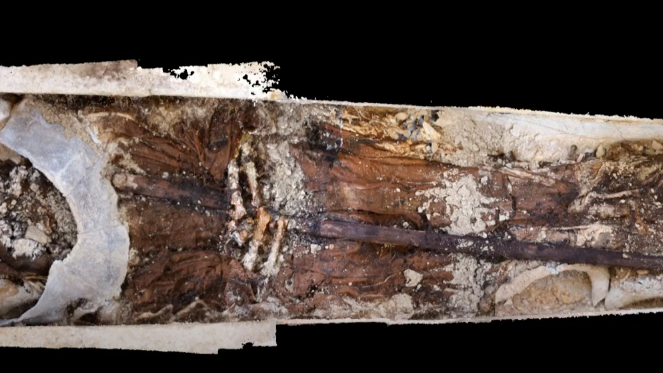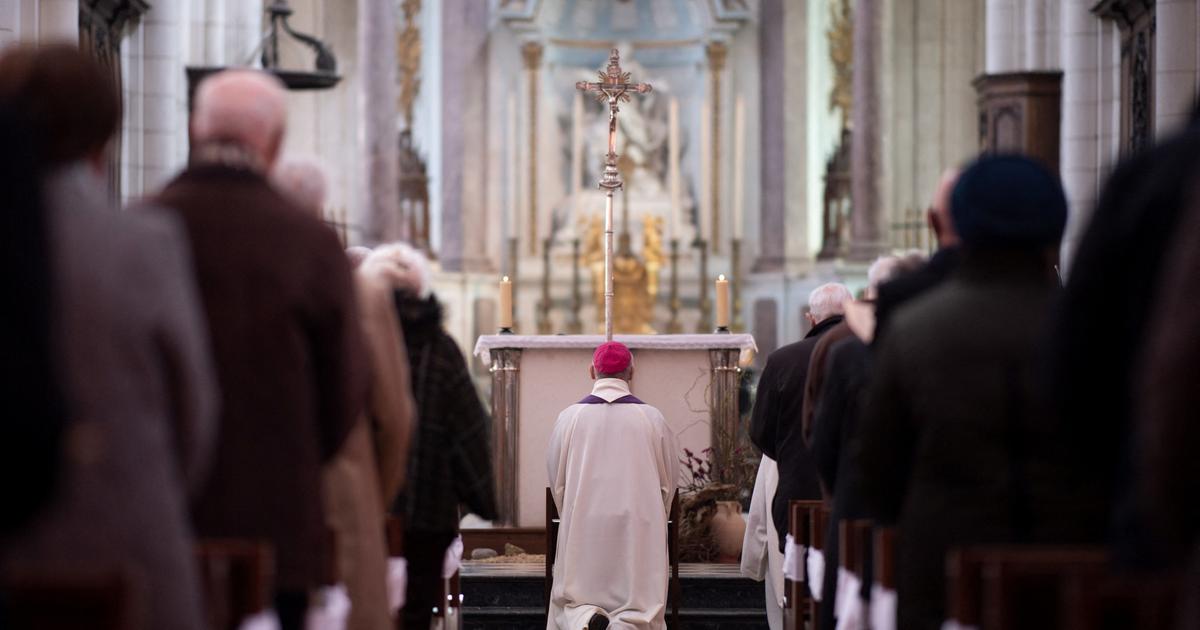The mummified body of a 13th-century abbot wearing a crook and mantle, in an excellent state of preservation, was unearthed during excavations of the former Saint-Médard abbey in Soissons, according to the town hall and archaeologists.
Archaeologists made this unexpected discovery at the end of October under a tombstone located in the crypt of the ruins of the abbey church.
In addition to the body, covered with a ceremonial mantle embroidered with gold and shod, the tomb contained a wooden butt.
The garment "
must have been sumptuous, if we manage to save it it will be extraordinary
", enthuses Denis Defente, archaeologist in charge of the excavation site.
Read also: An increase in archaeological discoveries recorded in the United Kingdom during containment
The entire burial was taken and left the scene Wednesday morning in a sealed box, entrusted to the ARC-Nuccléart laboratory at CEA Grenoble.
It will be irradiated there to “
stop the degradation of organic elements
”, before the continuation of the
“laboratory excavation
” and DNA analyzes, specifies Denis Defente.
Another curiosity of this burial, which intrigues the archaeologist: a "
lead envelope at the level of the head, cut on purpose in front of the face
".
According to the tombstone under which the burial was discovered, the body would be that of Abbot Alberic de Braine, who died on May 3, 1206. “
It would be extraordinary, because this family closely linked to the abbey is representative of the local nobility.
», Explains Denis Defente, who began to study the site in the 1980s, when the municipality was planning to build a school group there.
"
Exceptional discovery
"
"
It is an exceptional discovery, a beautiful moment of history and a great emotion
", declared the mayor of Soissons Alain Crémont in a press release.
"
It is extremely rare to see such a burial in our regions
", rejoices Jean-Luc Collart, regional curator of archeology at the Drac des Hauts-de-France.
The Saint-Médard Abbey, of Merovingian origin was "
very prestigious at the beginning of the Middle Ages
", he recalls.
Read also: Pompeii: discovery of a fresco with "trash hyperrealism"
Médard, the first bishop of Noyon, was buried there around the year 560 at the request of the Frankish king Clotaire I, eldest son of Clovis, who then had a basilica built there which became a high place of pilgrimage.
Excavations on the site resumed in 2019 with the help of archaeologists from CNRS, Inrap and the Archaeological Service of Aisne, with the aim of dating the church more precisely.









